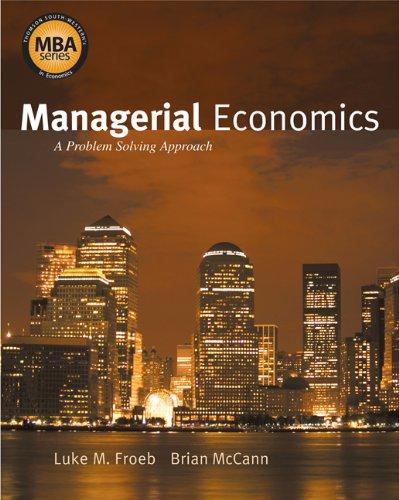
Apply correct solutions
1. A firm is about to pay a dividend of $1 on its common stock. The shares are currently quoted at $23.00. The dividend is expected to grow at the rate of 10% per annum. Calculate the cost of retained earnings for the company. 2. Cart Milner Inc. is a new firm that is making its first public issue of shares. The firm has decided to make the issue by means of an offer for sale by tender. The intention is to issue up to 4,000,000 shares (the full amount of authorized share capital) at a minimum price of 300 cents. The money raised, net of issue costs of $1,000,000, would be invested in projects which would earn benefits with a present value equal to 130% of the net amount invested. The following tenders have been received. (Each applicant has made only one offer.) Price tendered per share Number of shares applied for at this price $ 6.00 50,000 5.50 100,000 5.00 300,000 4.50 450,000 4.00 1,100,000 3.50 1,500,000 3.00 2,500,000 (a) How many shares would be issued, and how much in total would be raised, if Cart Milner Inc. chooses: (i) To maximize the total amount raised? (ii) To issue exactly 4,000,000 shares? (b) Steve Redmond, a private investor, has applied for 12,000 shares at a price of $5.50 and has sent a cheque for $66,000 to the issuing house that is handling the issue. In both cases (a)(i) and (ii), how many shares would be issued to Mr. Redmond, assuming that any partial acceptance of offers would mean allotting shares to each accepted applicant in preportion to the number of shares applied for? How much will Mr. Redmond receive back out of the $66,000 he has paid? (c) Estimate the likely market value of shares in the company after the issue, assuming that the market price fully reflects the investment information given above and that exactly 4,000,000 shares are issued. 3. A firm has invested $10 million in a plant. The first year allowance is 40%, whereas the remaining amount is written down over a period of four years. The tax rate is 30%. Earnings before tax over a five-year period are as follows. Year 1 Year 2 Year 3 Year 4 Year 5 Sm $m $m $m Sm W 2.5 3.5 3.8 4.2 (a) Calculate the tax liability every year and the after-tax earnings. (b) Calculate the impact on earnings if the first-year allowance is 60%












